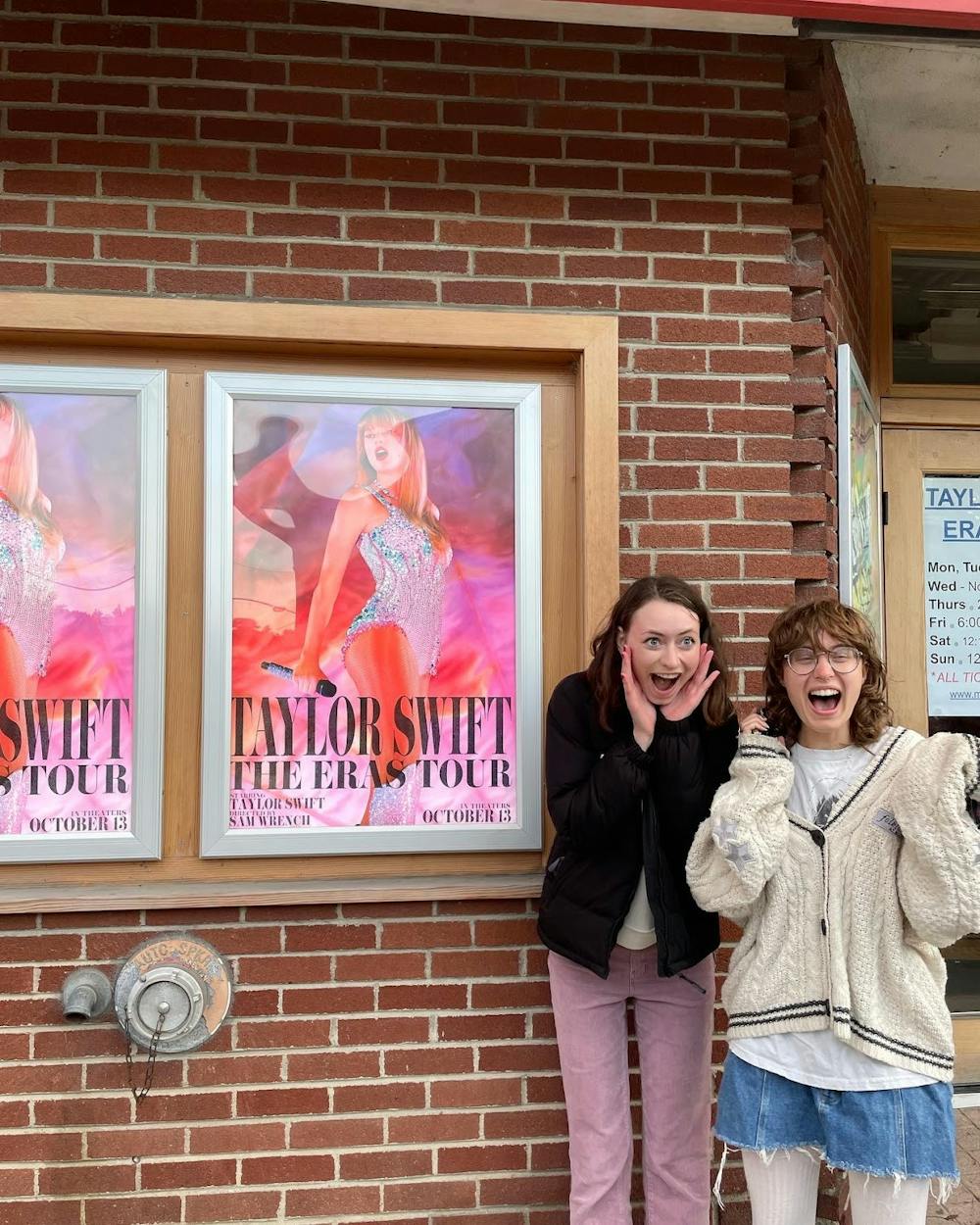Taylor Swift is my role model.
Now, I know what you’re thinking. Is a pop star with 46 Grammy nominations (including 12 wins) and an estimated net worth of over $1 billion really an appropriate role model for a graduating English major in rural Vermont? But let me explain.
It all began in middle school when I shared an iCloud account with my sister Lily, who is two years older than me. This meant that my iPod Touch had access to the music that she had chosen and downloaded on her device. Along with Lily’s hand-me-down clothes, I inherited songs like “You Belong with Me,” “Enchanted” and “White Horse.” Swift’s first four albums still blur in my mind, as I consumed all of them avidly at once without experiencing their distinct release years. Although 12-year-old Acadia had never experienced the highs and lows of high school romance, Swift’s lyrics painted such a vivid picture of life in small-town America that I felt able to flash-forward a few years and imagine how my own teenage years might compare to hers. As a young woman half a generation ahead of me, Swift and her music allowed me to peek around the corner.
By 2014, I finally logged out of Lily’s iCloud account and into my own, but that didn’t mean I had stopped seeking out Swift’s music. Rather than rural America, “1989” celebrated life in the big city with tracks like “Welcome to New York.” This was especially fitting since my dad’s job saw me swap my hometown in upstate New York for a temporary address in Manchester, England in the fall of 2014. Through “1989,” I projected myself into the messy glamor of Swift’s mid-twenties. Soon the “Reputation” album’s “Delicate,” and “Gorgeous” blasted alongside “Style” on my daily commute with my mom. On long family road trips in the minivan, we’d scheme about which tracks to play in an ongoing attempt to win over my dad and brother. As a middle child, I relished the exclusivity of having a common interest with my mom that my siblings didn’t share. Even now, those songs maintain an unexpected maternal glow — and they resurface on every drive back to Middlebury.
Surrounded by Swiss strangers during my exchange program in 2019, Swift’s familiar voice accompanied me on my daily walk to school. “Lover” came out only two weeks into my gap year, and to this day I can’t look at the pastel pink album cover without a twinge of nostalgia. Swift, 30 years old at the same, had lessons to share about the happy times (“Paper Rings”) and the heartbreaks (“Death by a Thousand Cuts”). I slurped them up in equal measure, as evidenced by the fact that Swift has been the top artist on my Spotify Wrapped every year since I joined the streaming service.
During the pandemic, almost every activity became more solitary, and music consumption was no exception. Swift’s twin Covid-19 albums, “Folklore” and “Evermore,” were explicitly story-like in a new way. Rather than letting listeners into her personal life, she invited us to step into the shoes of heiresses (“the last great american dynasty”), murderesses (“no body, no crime”) and ghosts (“right where you left me”). While Swift’s lyrics have always created new worlds, these were the most fantastical yet and quickly became the soundtrack to several rounds of quarantines. In addition to the celebrated trio of songs about a high school love triangle, the albums supplied the wisdom of older women, including Swift’s own grandmother (“marjorie”), reminding us, “Never be so kind, you forget to be clever / Never be so clever, you forget to be kind.” Given the isolation and turbulence that came with starting college during a pandemic, this big-picture reminder of our collective humanity helped ground me.
I once heard that readers tend to like books about people who are slightly older than themselves. Kids read about tweens, tweens about teens, teens about college kids and college kids about ‘real’ adults. My appreciation of Swift’s music supports that idea. Although listeners of Swift’s generation likely always saw her music as paralleling their own lives and experiences growing up, for me she was always one step ahead, encouraging me to dream about what came around the next bend.
When Swift first announced her colossal Eras Tour, I was studying abroad, giving special meaning to the “Midnights” album tracks “Paris” and “You’re On Your Own, Kid.” The fact that I didn’t know when I would be back in the US (or where I would spend the upcoming summer) prevented me from buying tickets to the tour, although the Ticketmaster presale drama likely would have led to the same result. In the end, I spent my summer jealously eyeing the photos and videos from seemingly every Midd girlie’s venture to the concert.
All that changed on Aug. 31, when Swift announced that she would be bringing her performance to theaters across the U.S. through a concert film entitled “Taylor Swift: the Eras Tour.” I booked my ticket weeks in advance to ensure a velvet-covered chair on opening night.
What’s magical about “The Eras Tour,” aside from Swift’s faultless mimicry of her original records, is its diversity. From starry-eyed sweetness in “Love Story” to raging angst in “… Ready for It?,” Swift makes transitions with ease, conveying the flush of first love and the anger of abandonment in a stunning mashup of 20 years of love and losses. Beyond emotional breadth, Swift changes into a new bedazzled costume for each of the concert’s 10 eras, matching the shifts in dance styles, sets and lighting design. Given the 10-year build-up, one might have expected the film to underwhelm, following the adage of “don’t meet your (anti-) heroes,” but instead I left the theater more confident than ever in Swift’s unique talents as a songwriter and as a performer.
Spanning hundreds of self-written songs, Swift’s range is unparalleled. She has a song for every sentiment, allowing listeners to tap into their own feelings and live vicariously through emotions they have yet to experience themselves. Taken in earnest, her music can make us more empathetic people, as we get to know ourselves and others better through her deftly-delivered lyrics.
If only Swift would release a song about the job search process so I could fully embrace my next Era.

Acadia Klepeis ’24 (she/her) is an Arts & Culture Editor.
She is an English major and a French and Francophone Studies minor. Last year, Cadi studied literature in Paris and in Oxford through Middlebury’s school abroad programs. She spent this past summer working as a communications intern for the Vermont Arts Council. Previously, she completed internships with Tuttle Publishing, Theatre in Paris, and Town Hall Theater. Cadi is also on the board for Middlebury College Musical Theatre.


